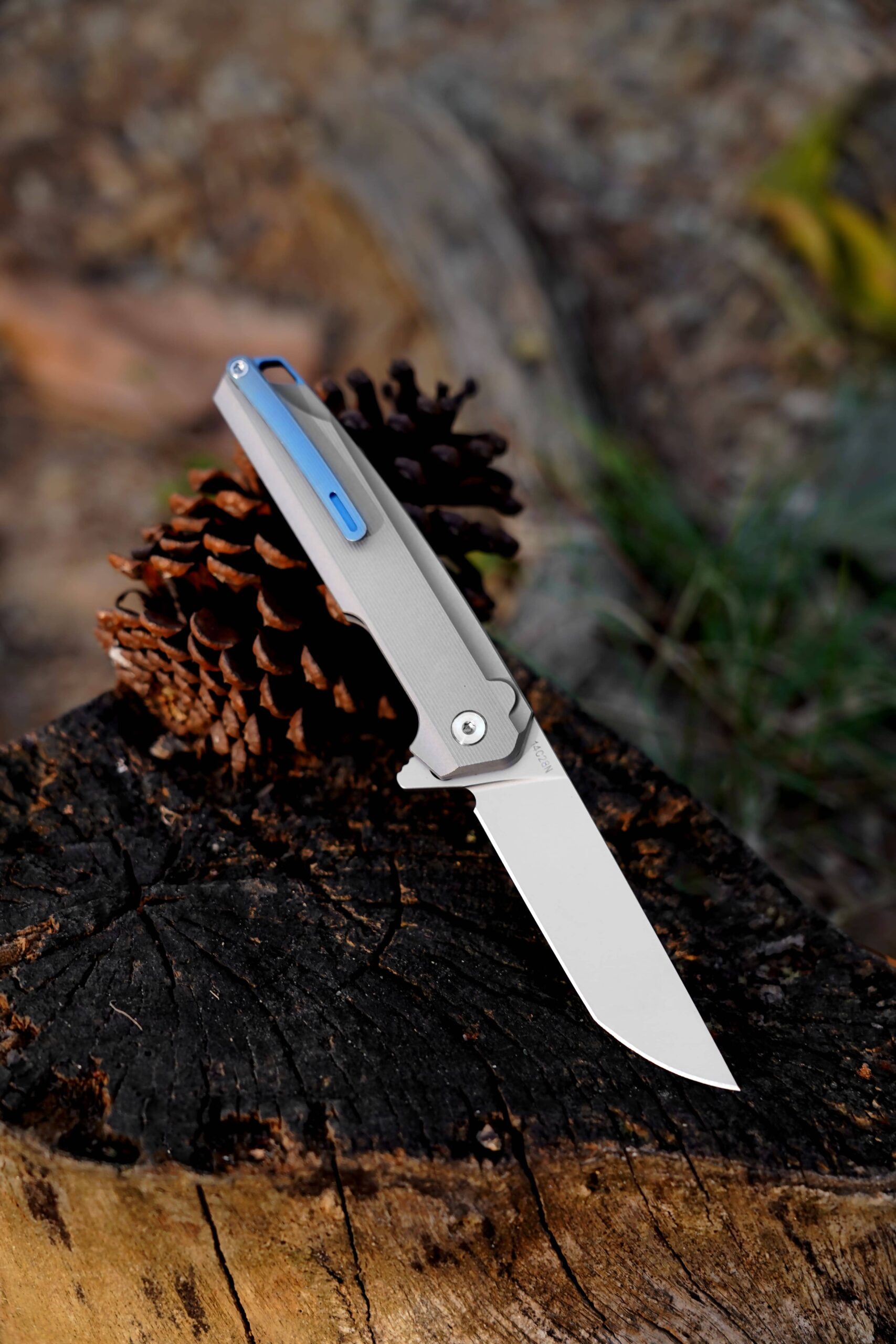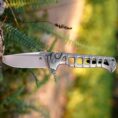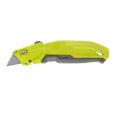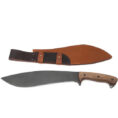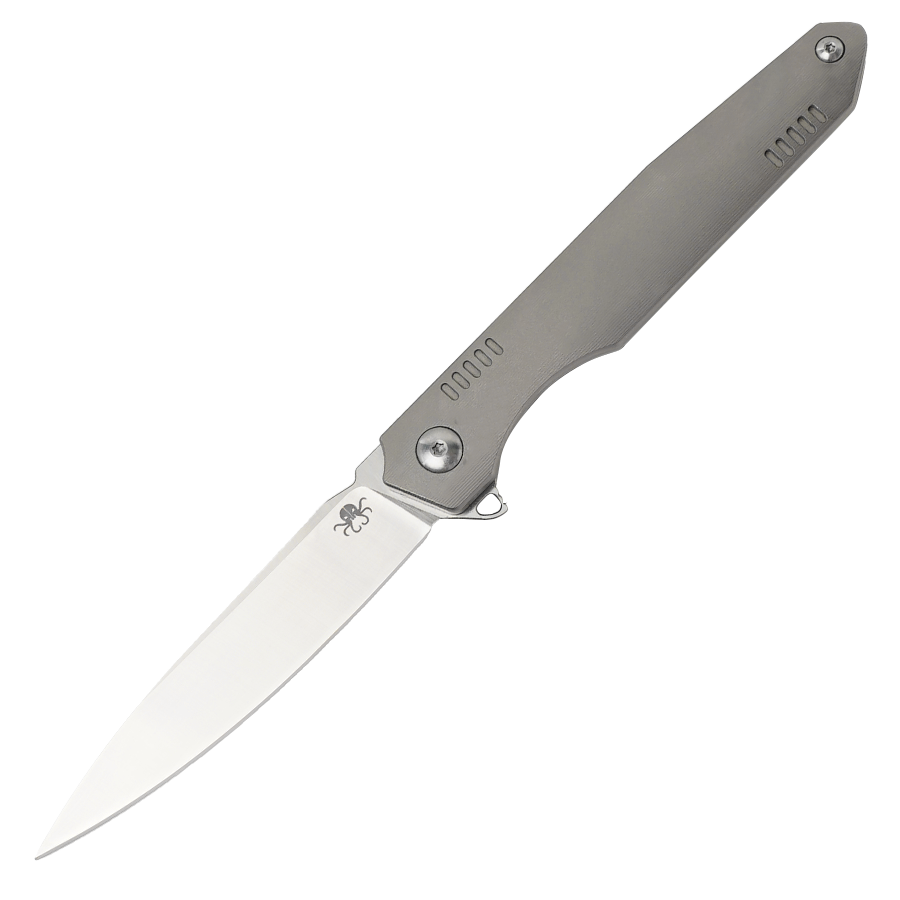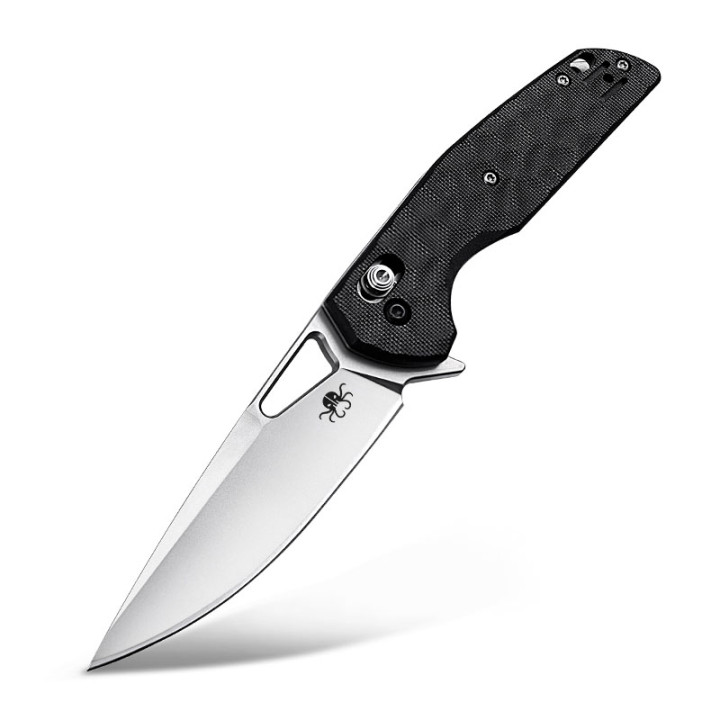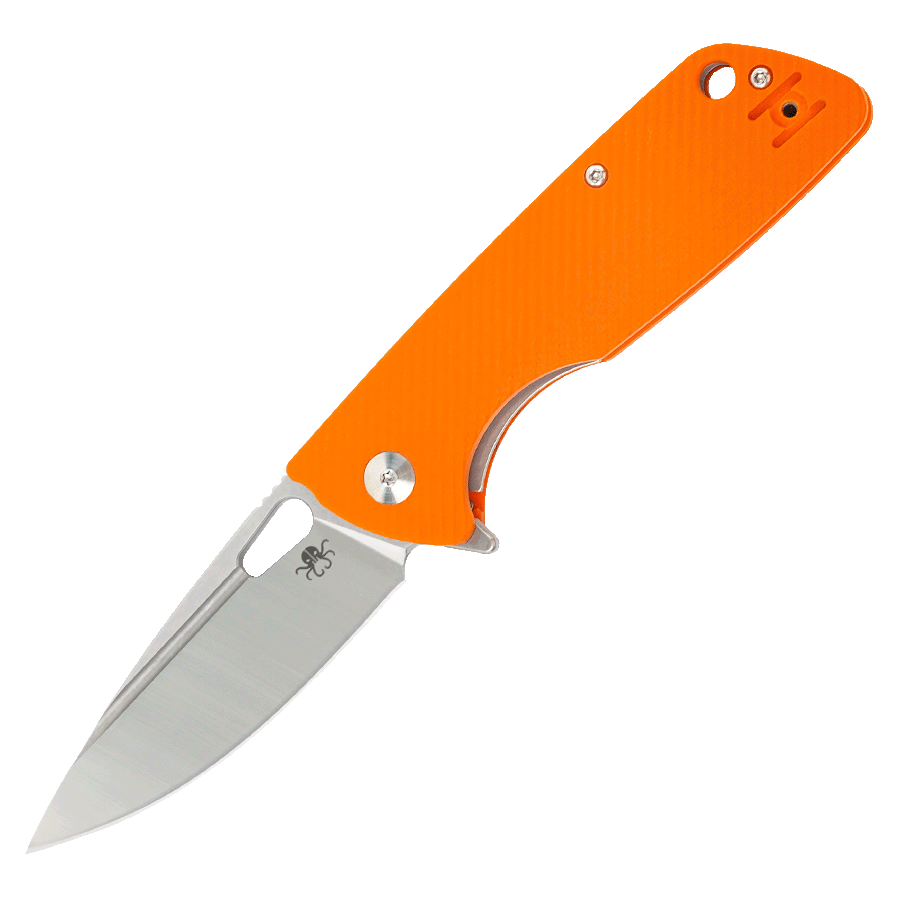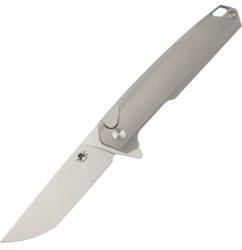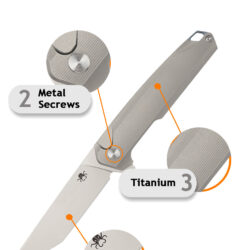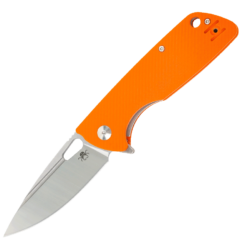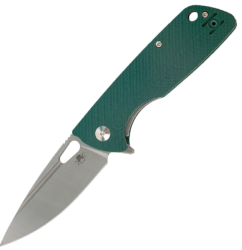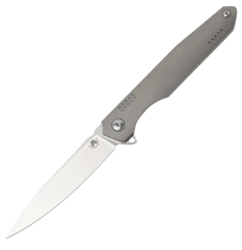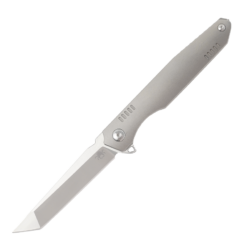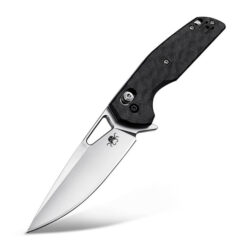How to Choose the Perfect Knife: Tailored Tips for Every Outdoor Enthusiast
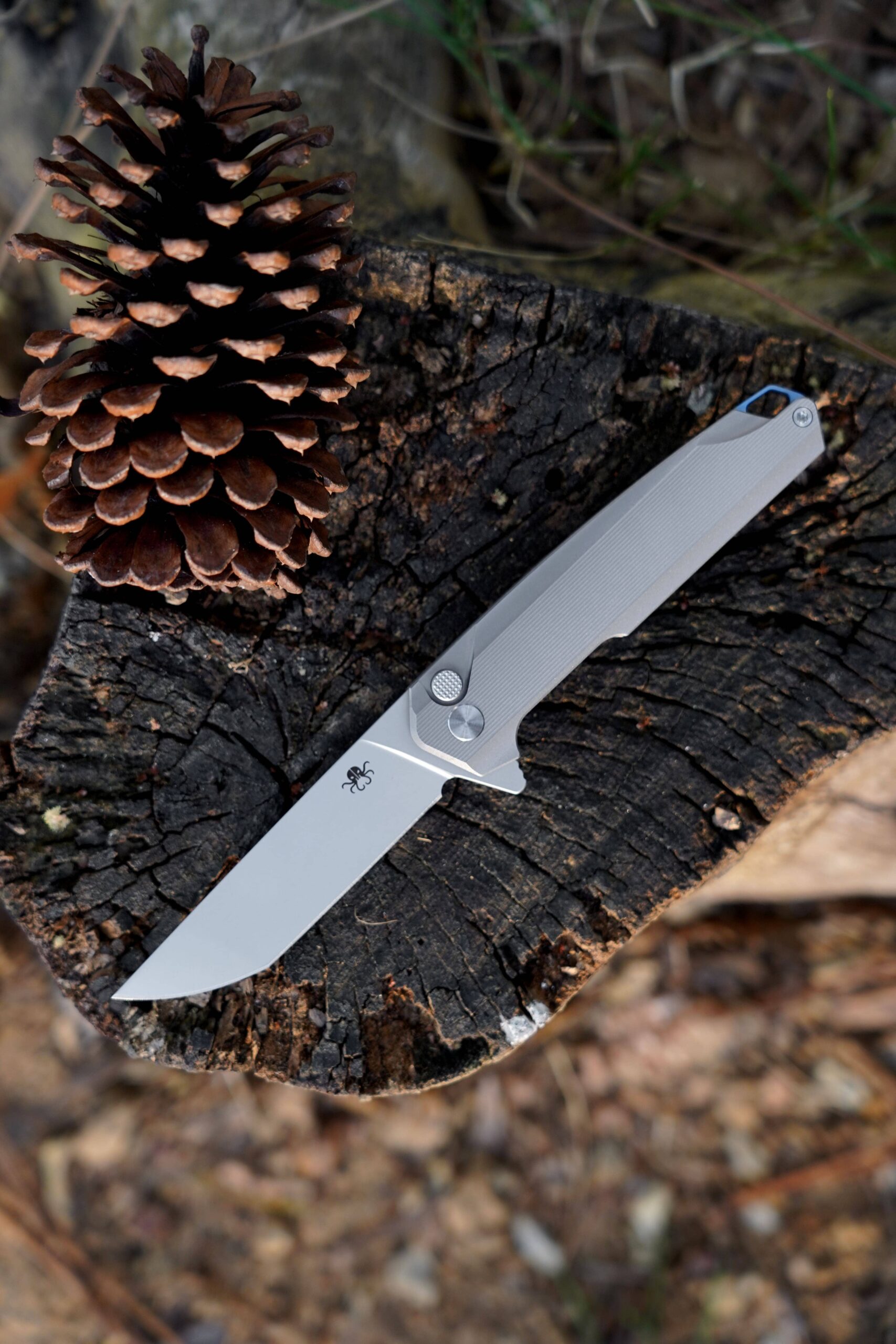
Introduction: The Essential Role of a Knife in Outdoor Adventures
For outdoor enthusiasts, a knife is more than just a tool—it’s a reliable companion, crucial for a wide range of activities, from survival situations to cooking meals on the trail. Whether you're a seasoned camper, an avid hiker, a passionate hunter, or a dedicated survivalist, choosing the right knife can make or break your outdoor experience.
In the world of knives, there's no one-size-fits-all solution. The perfect knife for one person might not be the best choice for another, especially when it comes to the wide variety of tasks and environments encountered outdoors. In this comprehensive guide, we’ll help you navigate the key considerations for selecting the perfect knife, tailored to your specific needs and preferences.
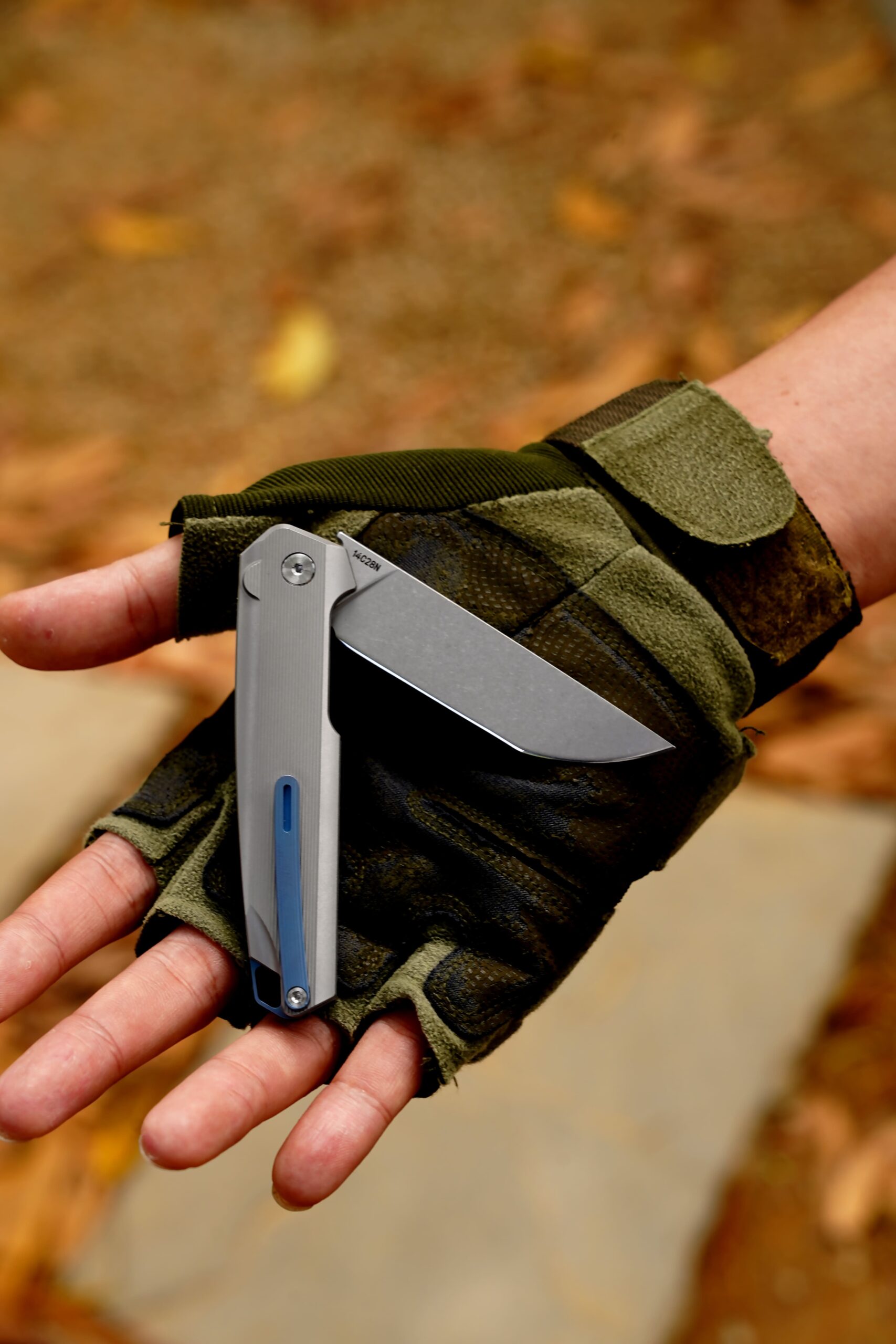
Chapter 1: Understanding the Basics of Knives for Outdoor Activities
1.1 What Makes a Knife "Perfect"?
While the definition of a “perfect” knife can vary from person to person, some universal factors determine a knife’s effectiveness and suitability for outdoor activities. It’s essential to understand these components before you make a decision.
Blade Material: The blade material not only affects the sharpness but also the longevity, ease of maintenance, and corrosion resistance of the knife. For example:
- Carbon Steel: This material is highly favored by many outdoorsmen due to its ease of sharpening and superior edge retention. However, it requires more maintenance because it rusts easily if not properly cared for. A carbon steel knife might be ideal for someone who is prepared to do regular maintenance but values a sharp edge.
- Stainless Steel: While slightly harder to sharpen, stainless steel blades are highly resistant to rust and corrosion, making them a great choice for outdoor activities near water, like fishing or boating. Popular types of stainless steel for knives include 440C, VG-10, and S30V.
- Tool Steel: A more industrial-grade material, tool steel is incredibly durable and ideal for heavy-duty outdoor work, such as chopping wood or splitting logs. It's typically found in larger survival knives or axes.
- High-Carbon Stainless Steel: Combining the best of both carbon steel and stainless steel, this alloy offers durability, edge retention, and rust resistance. For most outdoor activities, this steel is a fantastic balance between performance and low maintenance.
Blade Shape and Size: The type of blade you choose is often determined by the type of tasks you plan to do:
- Curved Blades: A curved blade excels in cutting and slicing tasks, making it a good choice for skinning animals or preparing food.
- Straight Blades: Straight blades are ideal for tasks requiring precision, like cutting ropes or cleaning fish.
- Serrated Edges: A blade with a serrated edge is perfect for cutting through tougher materials like rope, webbing, or bone, especially when wet.
Handle Design: A good handle allows for comfort and control over prolonged use. For example, a rubberized handle can prevent slippage when your hands are wet, whereas a wooden handle might offer a more classic feel but could be slippery in certain conditions. Ergonomically designed handles also prevent hand fatigue during tasks like chopping, carving, or food prep.
Durability and Weight: Knives need to be durable enough to withstand the tough demands of outdoor work. However, they should also be lightweight enough to be easily carried without adding excessive bulk to your pack. A balance is needed between toughness and portability, with larger knives (like survival knives or axes) typically weighing more, while smaller knives (like pocket knives) are lighter but less suited for heavy-duty work.
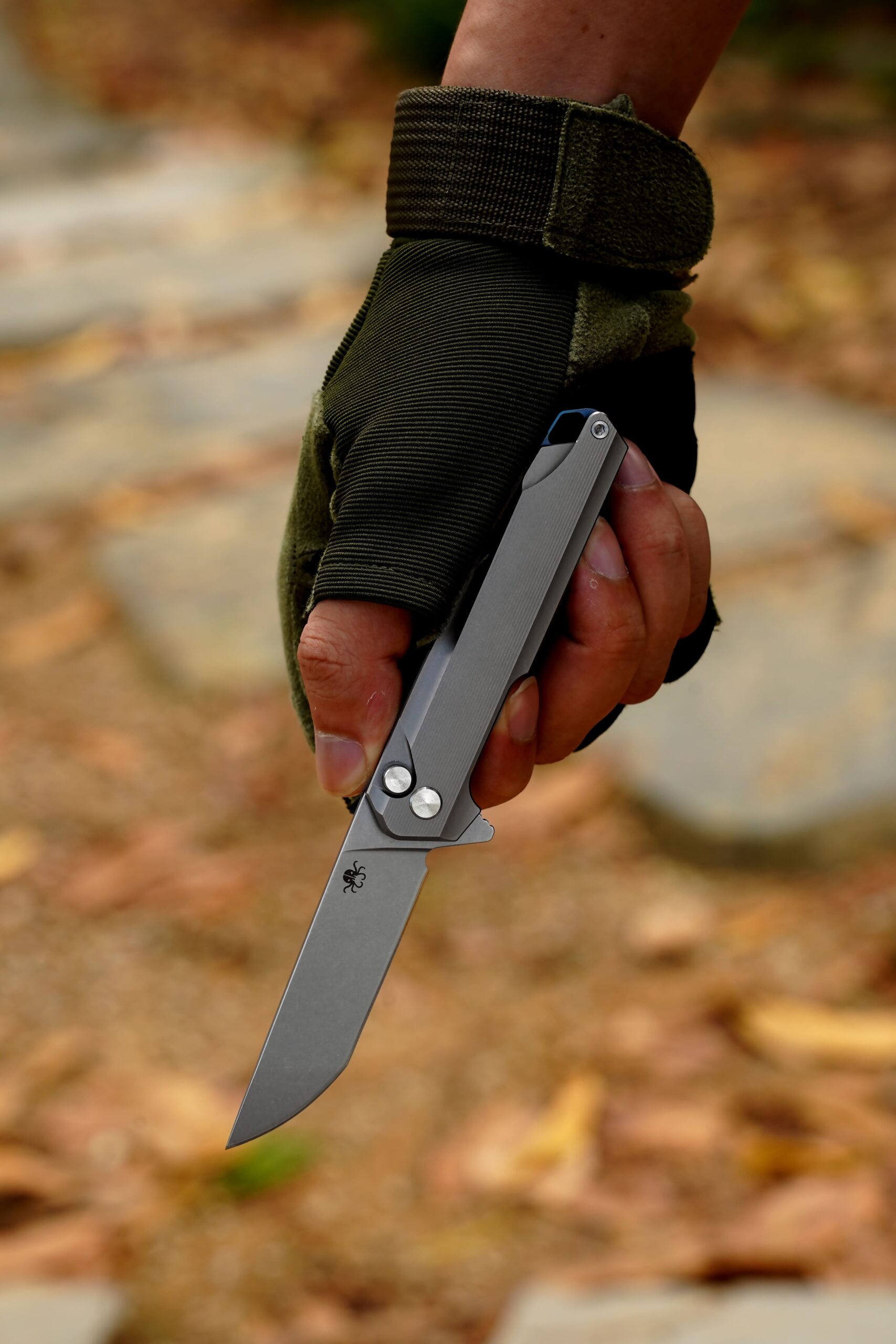
Chapter 2: Types of Outdoor Knives and Their Uses
2.1 Survival Knives
A survival knife is an all-purpose tool that can handle a variety of tasks that might arise in a survival situation. Key features to look for in a survival knife include:
Full Tang Construction: The tang refers to the portion of the blade that extends into the handle. A full tang means the blade is one continuous piece of steel that runs all the way through the handle, which makes the knife much stronger and more durable. This is particularly important when using the knife for heavy-duty tasks like chopping or prying.
Multifunctional Features: Some survival knives come with built-in tools, such as:
- Fire Starter: A ferrocerium rod integrated into the handle can be used to start a fire even in wet conditions.
- Emergency Whistle: An embedded whistle can be a lifesaver when signaling for help.
- Compass: Some knives feature a small compass in the handle, which is an essential tool for navigation.
- Paracord Handles: Some survival knives come with a paracord-wrapped handle, which can be unwound in an emergency to provide essential cordage.
Recommended Survival Knives:
- ESEE 6: A popular choice among survivalists for its tough, 6-inch full tang blade made from high-carbon steel, ideal for chopping, batoning, and other heavy tasks.
- Gerber StrongArm: A fixed-blade knife with a diamond-textured rubber handle and full tang construction, designed for tough conditions.
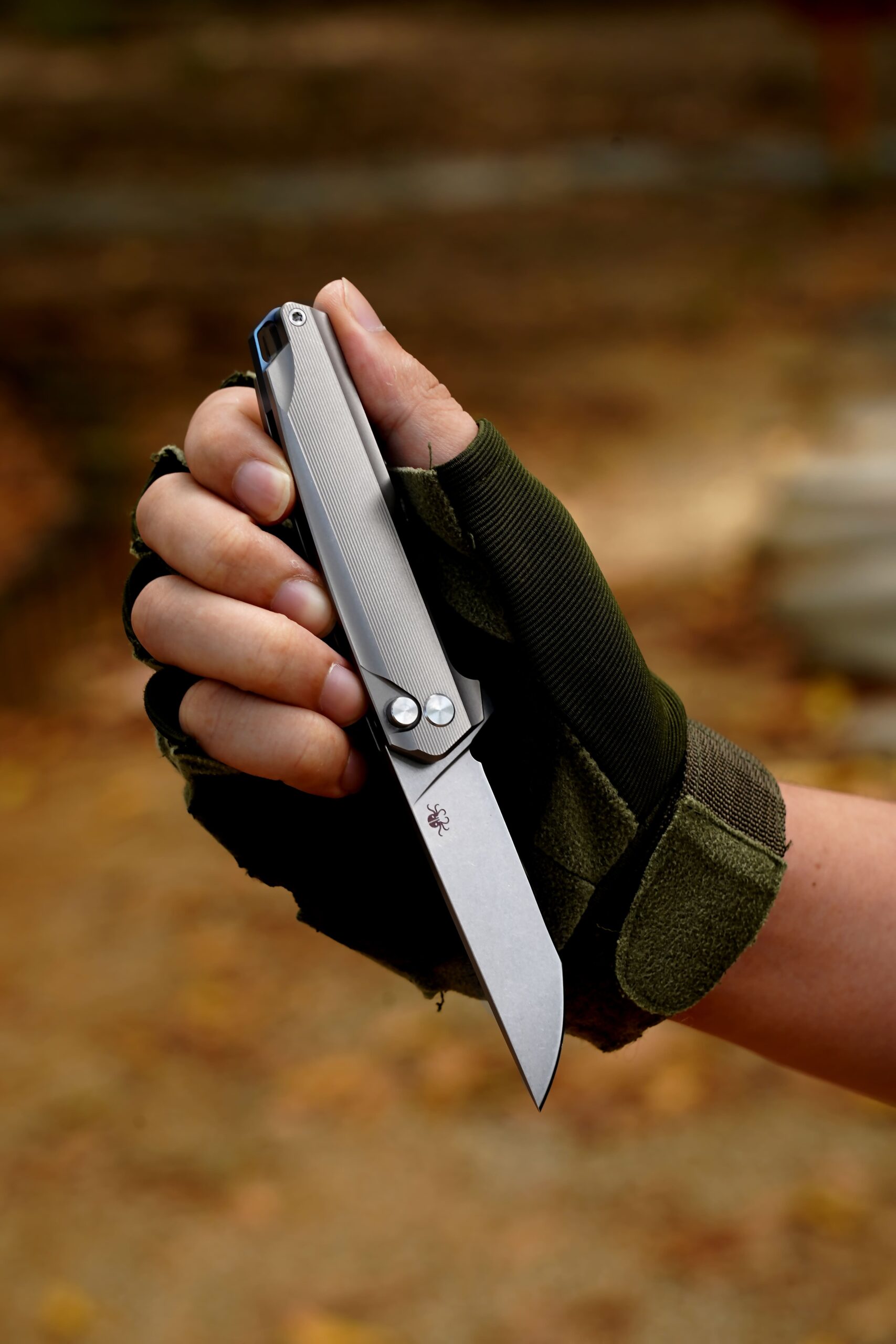
2.2 Hunting Knives
Hunting knives are designed to help hunters field-dress their game efficiently. A good hunting knife should be able to perform tasks like skinning, gutting, and deboning. Here’s what to consider:
- Blade Shape and Size: A smaller, curved blade is typically the best choice for skinning and delicate cutting tasks, as it offers precision. Larger knives are better for heavy-duty tasks like quartering large game.
- Drop Point Blades: These blades are a common choice for hunting knives due to their versatile design, which allows for both fine precision and tougher cutting tasks.
- Skinning Blades: These blades have a pronounced curve, allowing for smooth cuts along the skin and tissue. A gut hook integrated into the spine of the blade can help open the body cavity without damaging internal organs.
- Ergonomics: Comfort is key when using a hunting knife for extended periods. A contoured handle will reduce hand fatigue, and a textured grip ensures control even when your hands are slippery with blood or moisture.
Recommended Hunting Knives:
- Buck 119 Special: A fixed-blade knife with a 6-inch stainless steel blade that’s excellent for general hunting tasks.
- Benchmade Saddle Mountain Skinner: A well-regarded skinning knife known for its superior ergonomics and fine, high-quality steel.
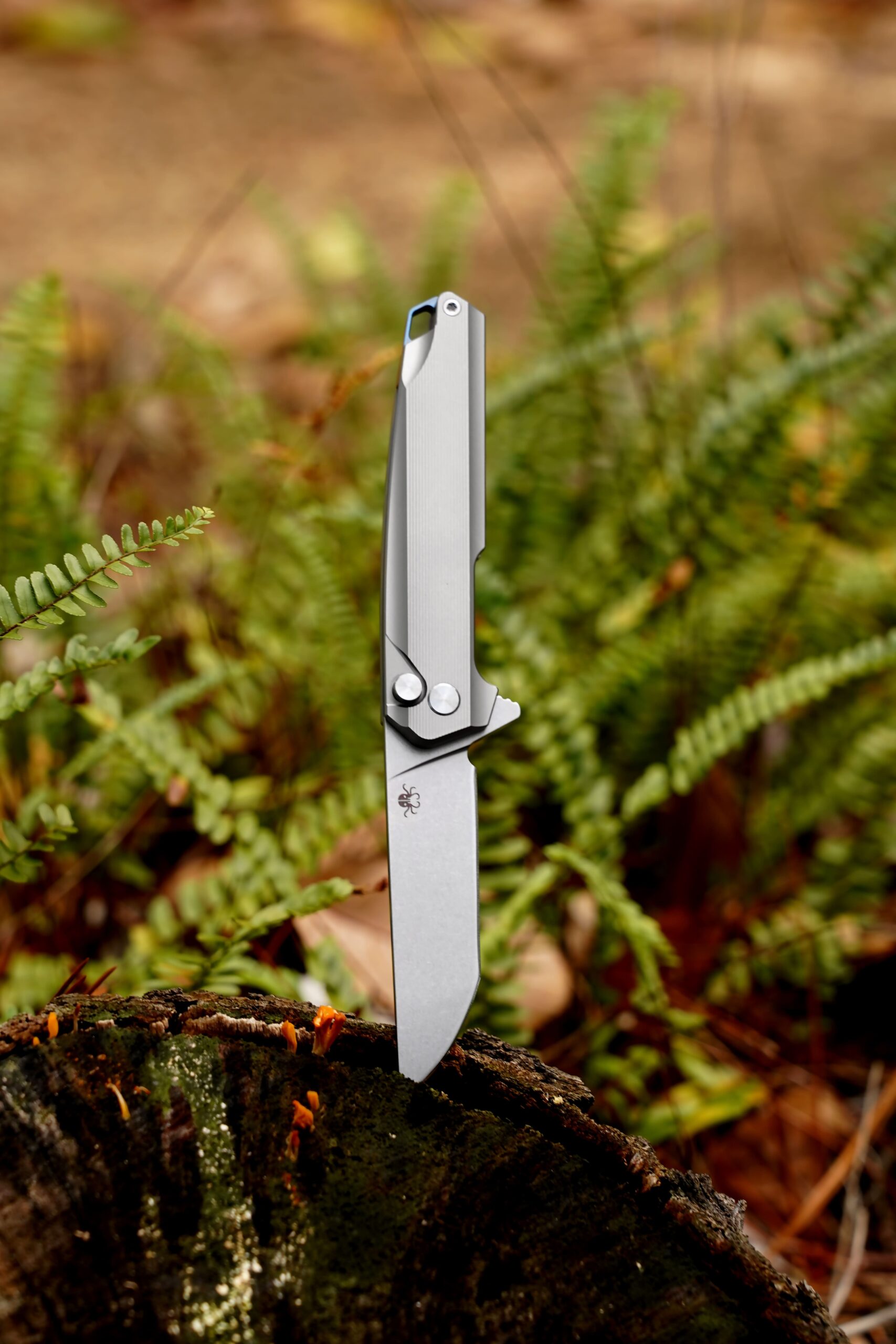
2.3 Fishing Knives
Fishing knives are essential tools for cutting lines, preparing bait, and filleting fish. When choosing a fishing knife, consider the following:
- Blade Flexibility: A flexible blade is essential for filleting fish, as it allows for precision when slicing through delicate fish fillets without damaging them.
- Corrosion Resistance: Since fishing knives are used in wet conditions, it’s essential that the blade is resistant to corrosion. Stainless steel, especially high-grade variants like 420HC or VG-10, offers good corrosion resistance and strength. Titanium blades are another excellent option for saltwater environments as they are highly resistant to rust.
Recommended Fishing Knives:
- Rapala R12 Heavy Duty Knife: This fillet knife features a flexible, corrosion-resistant stainless-steel blade that’s perfect for both freshwater and saltwater fishing.
- Morakniv Craftline: A great budget option for fishing, with a non-slip handle and a blade that resists corrosion.
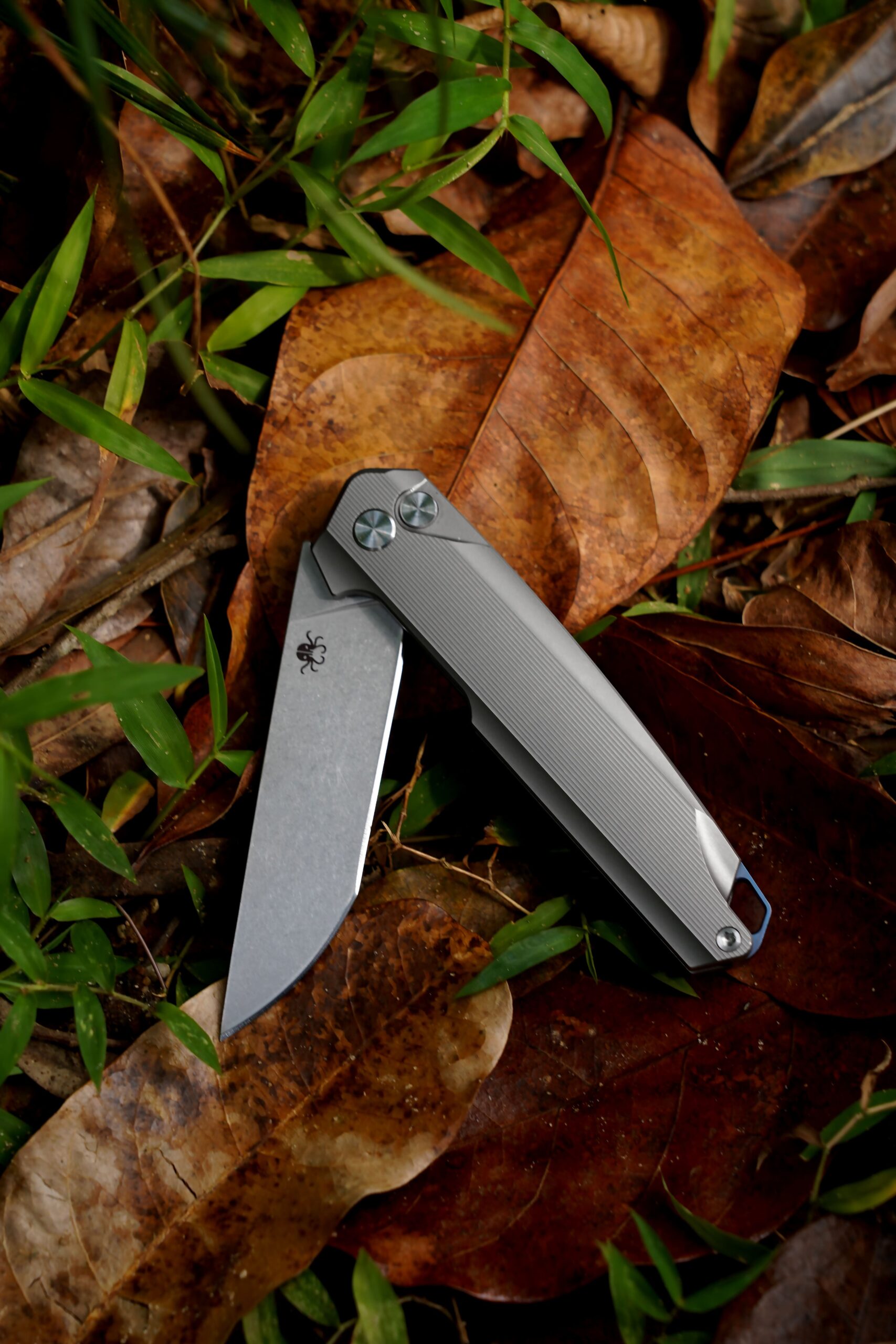
Chapter 3: Blade Shapes and Their Benefits
3.1 Drop Point Blade
Why It's Ideal for Outdoor Use: The drop point blade offers a solid balance of strength and versatility. It’s particularly well-suited for hunting, survival, and camping because of its ability to perform tasks such as skinning, slicing, and general cutting. The curved edge allows for easy slicing, while the sharp tip is excellent for piercing or more precise tasks.
Recommended Use Cases:
- Hunting: For skinning and field dressing game.
- Survival: Great for making shelter, chopping wood, and preparing food.
- Everyday Use: The drop point design is perfect for general-purpose camping and outdoor use.
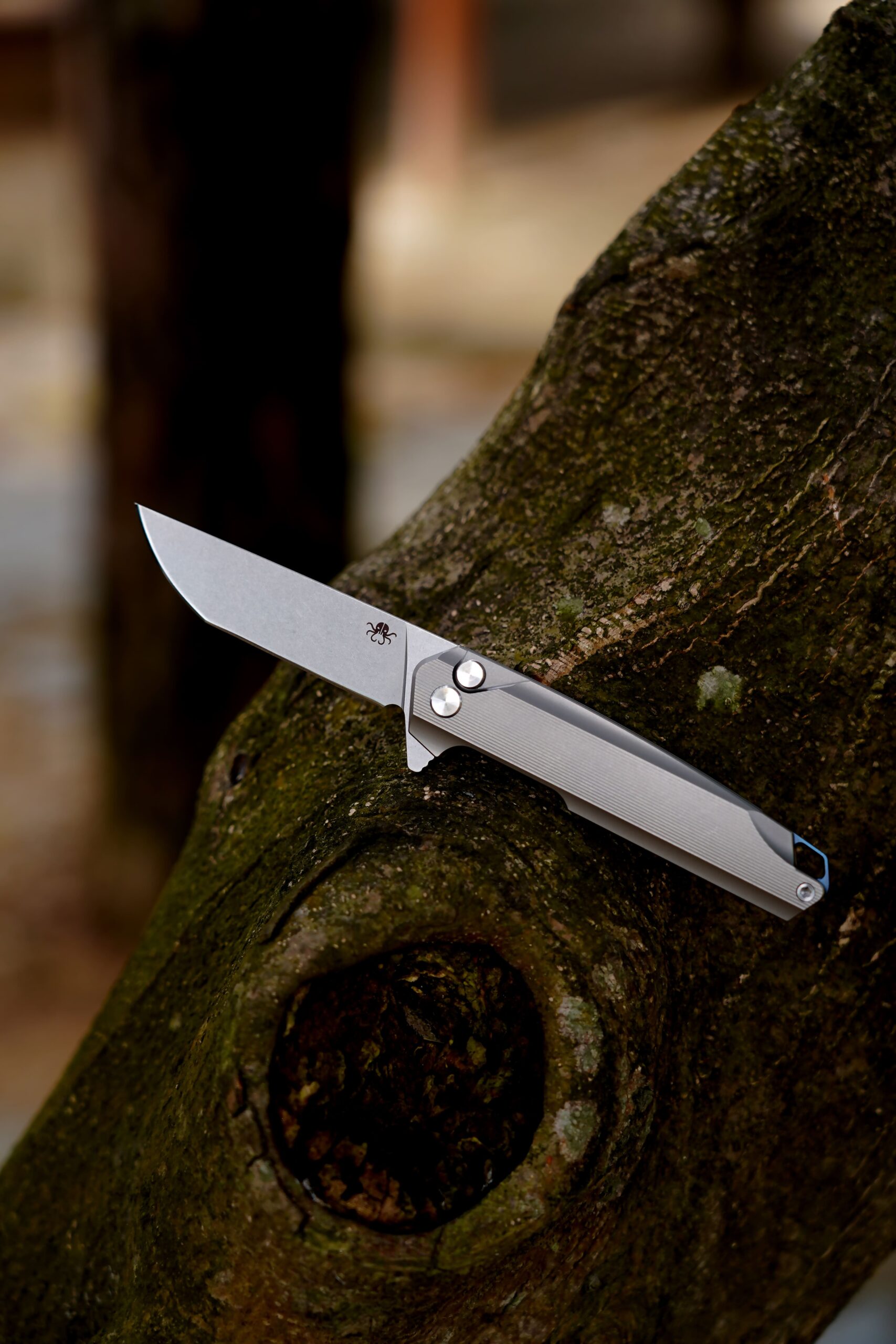
3.2 Tanto Blade
Strength for Tough Tasks: The tanto blade has a reinforced tip, which makes it excellent for piercing and tasks that require added strength. It’s particularly useful when working with tough materials, such as wood, bone, or even dense fabrics.
Recommended Use Cases:
- Survival: The strength of the tanto tip makes it perfect for tasks like prying, breaking through barriers, or penetrating tough materials.
- Tactical/Combat: The piercing tip makes it a good choice for tactical or self-defense knives.
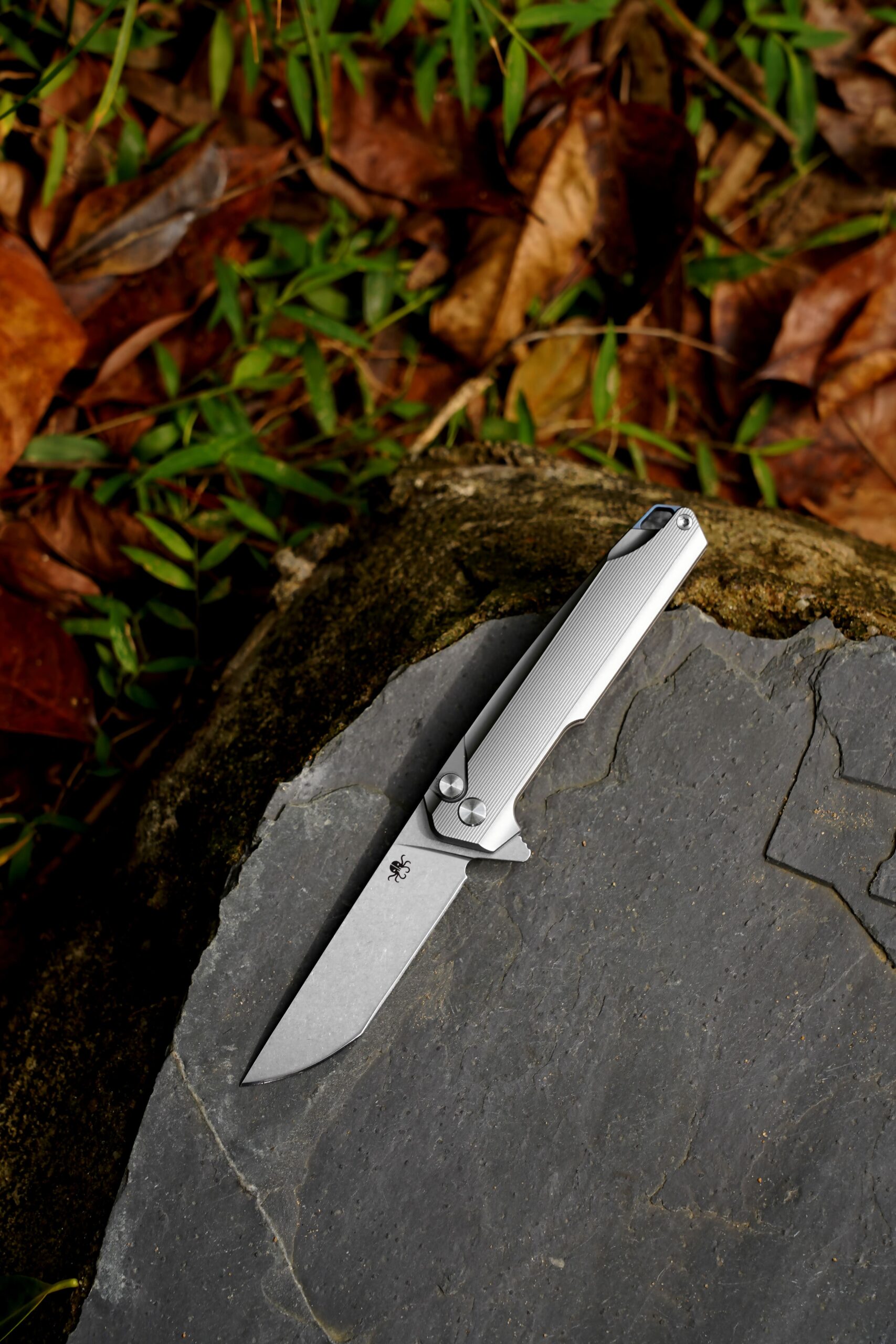
Chapter 4: Handle Materials and Ergonomics
4.1 Wood Handles
- Aesthetic Appeal and Comfort: Wooden handles, like those made from walnut, oak, or rosewood, are known for their natural beauty and ergonomic feel. They offer a classic look but need regular maintenance (oil treatments) to prevent cracking, warping, or drying out over time.
- Drawbacks: While wood handles are comfortable and aesthetically pleasing, they can be slippery when wet, so they might not be ideal for all outdoor environments.
4.2 Synthetic Handles (G10, Micarta, FRN)
Durability and Grip: Synthetic materials like G10 (fiberglass laminate) and Micarta (compressed linen or canvas) offer exceptional strength, a non-slip grip, and resistance to environmental conditions. These materials are perfect for rugged outdoor tasks and will hold up even in extreme conditions.
Benefits: They provide superior grip and stability, even in wet or cold conditions, and are less prone to the wear and tear associated with wood handles.
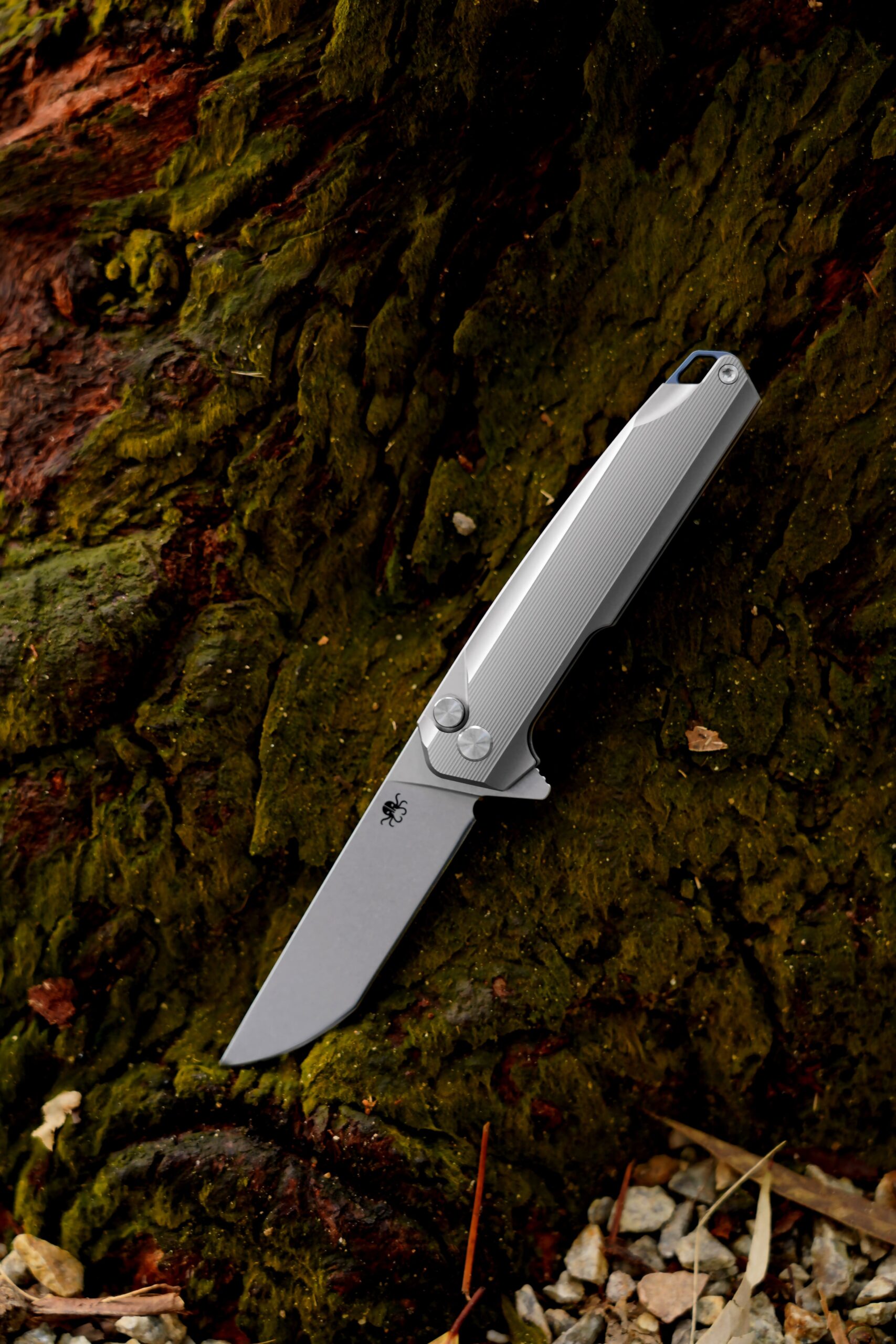
Chapter 5: Practical Tips for Choosing the Right Knife for Your Activity
5.1 Choosing the Right Knife for Hiking and Camping
Hiking and camping often involve a variety of tasks, from preparing meals to building shelters. When selecting a knife for these activities, consider the following factors:
Lightweight and Compact Design: For hiking, every ounce counts. The knife should be lightweight yet durable enough to handle basic cutting, slicing, and other tasks. Fixed-blade knives tend to be sturdier, but they may be bulkier, whereas folding knives are more compact and portable, making them better suited for backpacking.
- Recommended Choice: A mid-sized fixed-blade knife or a compact folding knife like the Spyderco Para 3 or the Gerber StrongArm works well for hiking and camping. These knives are tough, but light enough for the long haul.
Versatility: The ideal camping knife should be able to handle a variety of tasks, from food prep to making kindling for a fire. A multitool knife is perfect for the person who wants a knife that does it all. Look for one with serrated edges for cutting rope and a fine edge for carving or food prep.
- Additional Features: Some camping knives come with sheath attachments for things like fire starters or sharpeners, adding convenience when you're out in the wild.
Handle Comfort: You’ll be using the knife for an extended period, so it’s important to choose a handle that fits comfortably in your hand. A textured rubber or Micarta handle provides both a solid grip and comfort during long tasks. Make sure the knife is ergonomically designed to reduce hand strain.
Recommended Camping Knives:
- Morakniv Companion Heavy Duty: A popular choice for campers due to its sturdy, reliable blade and comfortable grip. The 4.1-inch blade is great for most outdoor tasks.
- Benchmade Bushcrafter 162: This full-tang knife is made for heavy-duty outdoor use, with a durable steel blade that’s easy to maintain and provides a solid grip for chopping and carving tasks.
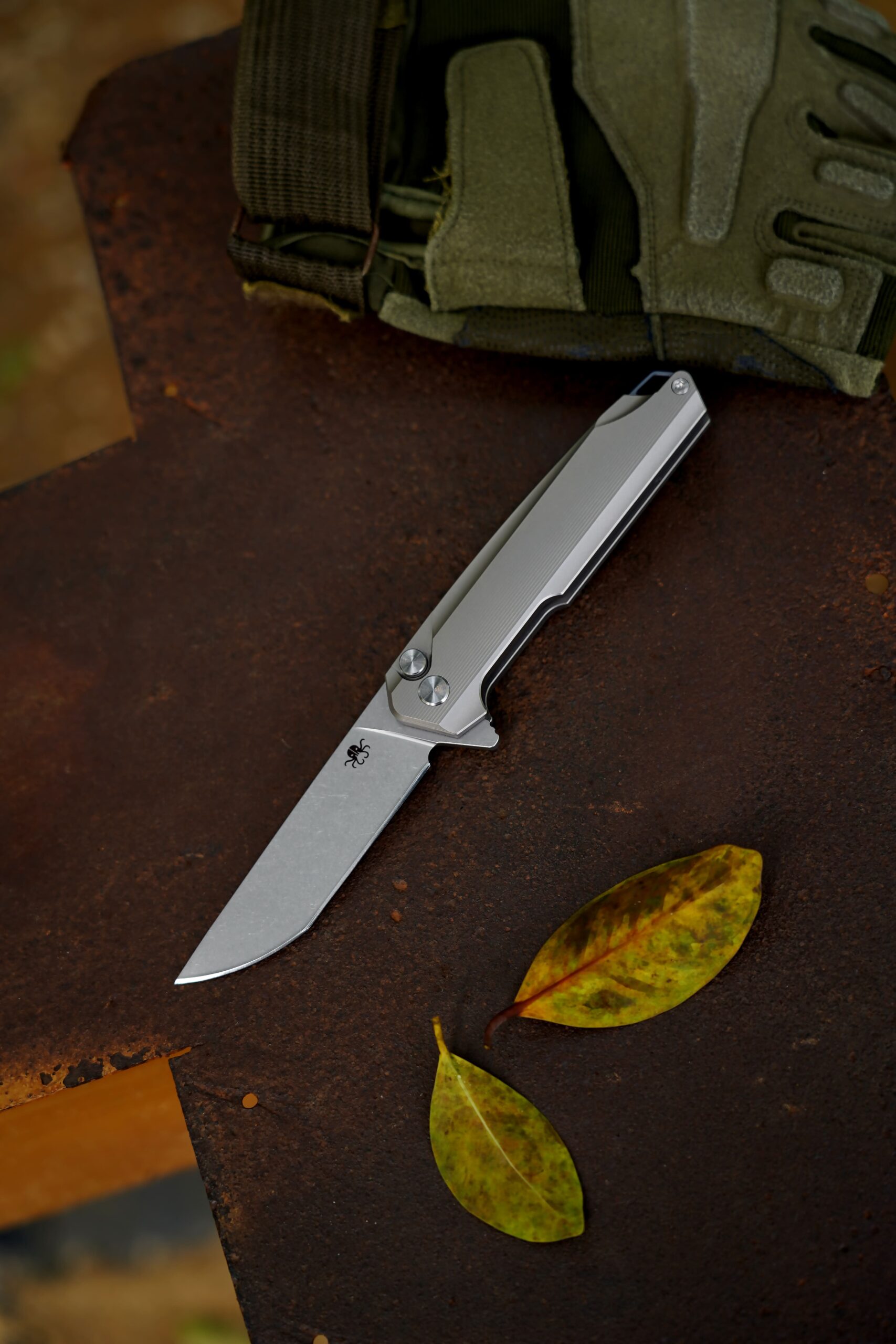
5.2 Knife Selection for Survival Situations
Survival knives are tools you can rely on when you're stranded or in an emergency situation. These knives need to be versatile and tough, handling everything from food prep to shelter construction.
Full-Tang Construction: One of the most important features of a survival knife is full-tang construction. A full tang extends the length of the handle, ensuring strength, reliability, and the ability to handle heavy tasks like batoning (splitting wood) and prying.
Blade Length: While blade lengths of 4–6 inches are generally sufficient for most outdoor survival tasks, you may prefer a larger 7-9 inch blade for tasks that require extra force, such as chopping wood or self-defense. However, longer blades can be less maneuverable, so you’ll need to balance utility with ease of use.
Extra Features: Many survival knives come with added features like:
- Built-in Fire Starters: Fire starters are essential for survival, and many knives have them integrated into the handle or the spine of the blade.
- Tactical Sheaths: A good sheath for a survival knife may include compartments for storing essential tools like a sharpening stone or a first aid kit.
- Multipurpose Tools: Some knives also include a whistle, compass, or signal mirror, which are vital in survival scenarios.
Recommended Survival Knives:
- KA-BAR USMC Fighting/Utility Knife: A trusted survival knife with a strong, full-tang blade and a tough leather sheath. It has a 7-inch blade, making it great for heavier tasks like chopping.
- ESEE 5: Known for its ruggedness and reliability, this knife has a 5.25-inch full-tang blade and is perfect for everything from skinning animals to chopping firewood in a survival scenario.
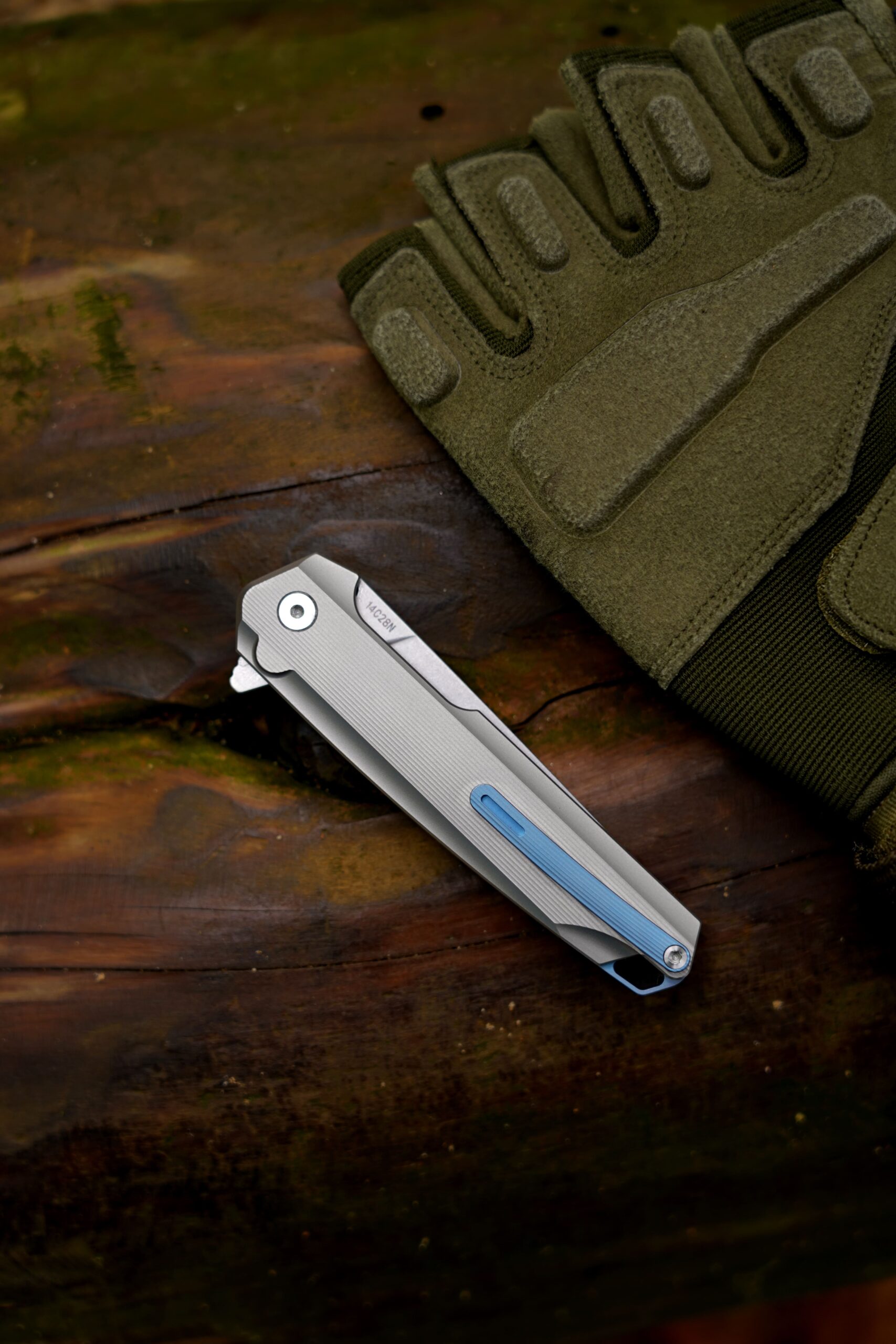
5.3 Knives for Fishing and Boating
When you're out on the water, having a reliable fishing knife is essential for cleaning fish, cutting line, or preparing bait. These knives need to withstand moisture and offer fine, precise cutting.
Corrosion Resistance: Since fishing often involves wet conditions, you’ll want to make sure your knife is corrosion-resistant. Stainless steel or titanium blades are the best options for knives that will be exposed to saltwater and freshwater.
Blade Flexibility: A flexible blade is ideal for filleting fish. It allows you to make clean, precise cuts along the backbone and ribs of the fish without damaging delicate flesh. Flexibility also makes the knife useful for cutting through soft bait or smaller fish.
Non-Slip Grip: Since fishing can often get messy, you need a knife with a handle that stays firmly in your hand, even when wet. Rubberized or textured grips are ideal for this purpose, offering slip resistance even when covered in scales or slime.
Recommended Fishing Knives:
- Rapala Fish ‘n Fillet Knife: This is a classic filleting knife with a flexible, stainless steel blade that’s perfect for cleaning fish.
- Gerber River Shorty: A compact, corrosion-resistant knife with a blunt tip that’s ideal for general boating and fishing tasks.

5.4 Knife Use in Hunting and Game Processing
For hunters, a knife is an indispensable tool for field dressing, skinning, and butchering game. Here’s what to look for in a hunting or game processing knife:
Blade Shape: When processing game, a curved blade is essential for skinning. The curve allows for smooth cuts along the skin without puncturing the internal organs. Gut hooks—a small hook at the tip of the blade—are also incredibly useful for opening up the abdomen without accidentally puncturing the intestines.
Blade Length: A hunting knife should have a blade that is long enough to handle tougher tasks, like cutting through bone or larger portions of meat, but short enough to allow for precision and control. A 3-5 inch blade length works well for most game processing tasks.
Ergonomics and Grip: Since skinning and processing game can require extensive use of the knife, the handle should be comfortable, ergonomic, and offer a solid, non-slip grip. Look for handles made from Micarta or rubberized materials.
Durability: When choosing a hunting knife, you’ll need something durable enough to stand up to tougher tasks like cutting through bone or splitting joints. A high-carbon steel blade can offer the toughness you need, but be prepared for more frequent maintenance to prevent rust.
Recommended Hunting Knives:
- Benchmade Meat Crafter: This specialized game processing knife has a curved blade with a gut hook, perfect for skinning and butchering tasks.
- Havalon Piranta Z: Known for its replaceable surgical-grade blade, this knife offers unmatched precision for field dressing and skinning.
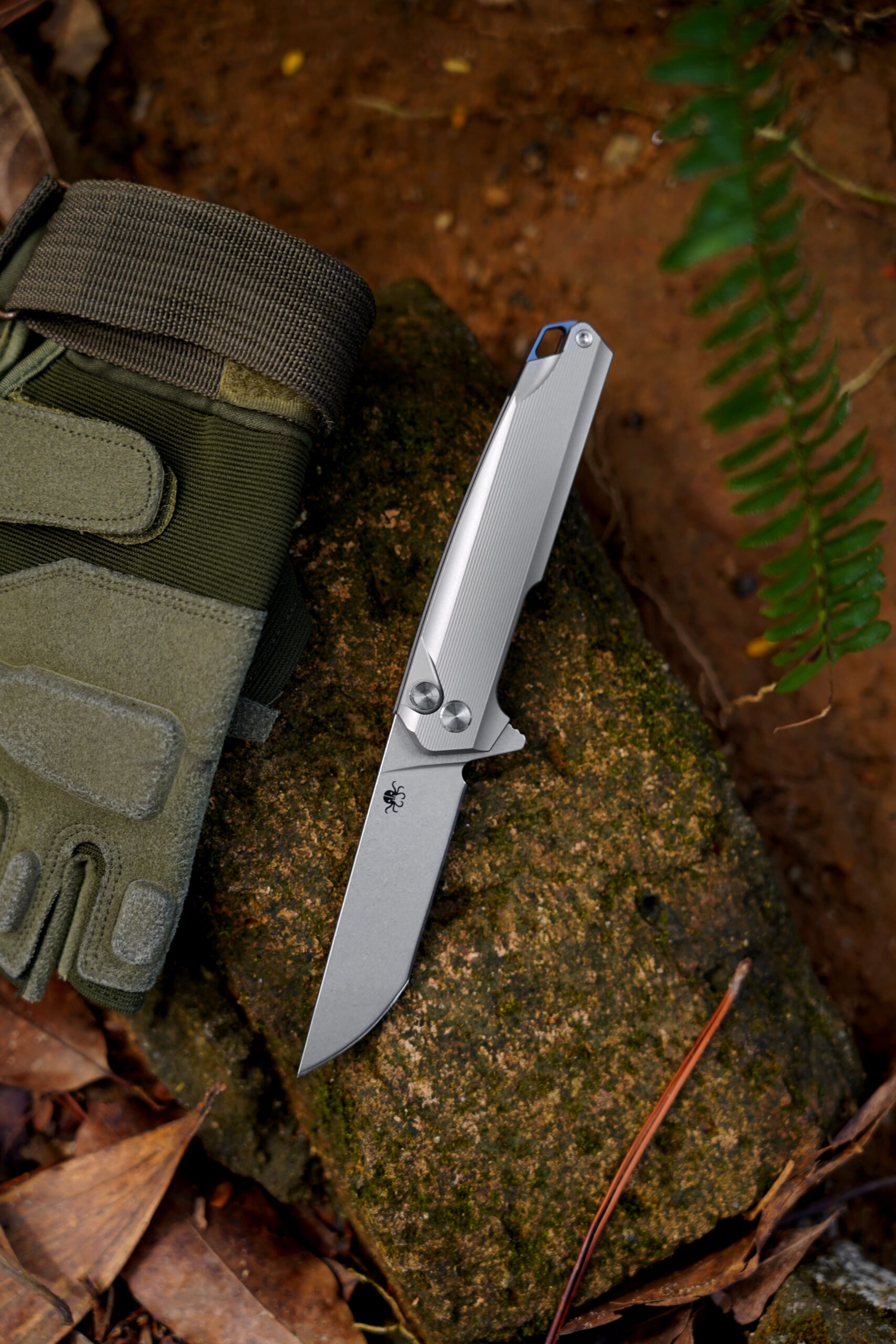
Conclusion: Finding the Perfect Knife for Your Outdoor Needs
Selecting the right knife is an essential part of outdoor gear selection. Whether you are hiking, hunting, fishing, or surviving in the wilderness, your knife needs to match your intended activities. By considering the type of tasks you’ll be performing, the environments you’ll encounter, and the specific qualities of the knife (such as blade material, handle type, and additional features), you can make an informed decision.
Here are some final tips to keep in mind:
- Don’t Compromise on Quality: Your knife will be one of the most important tools in your kit. It’s worth investing in a high-quality knife that will serve you well for years to come.
- Test Your Knife: If possible, try out the knife before buying it. Testing the grip, balance, and blade performance in real-life situations can help you make a more confident decision.
- Regular Maintenance: Keep your knife in top condition by regularly cleaning it, sharpening the blade, and storing it properly to prevent rust.
The perfect knife for you is out there—it’s just a matter of matching your needs with the right design. Happy adventuring!
